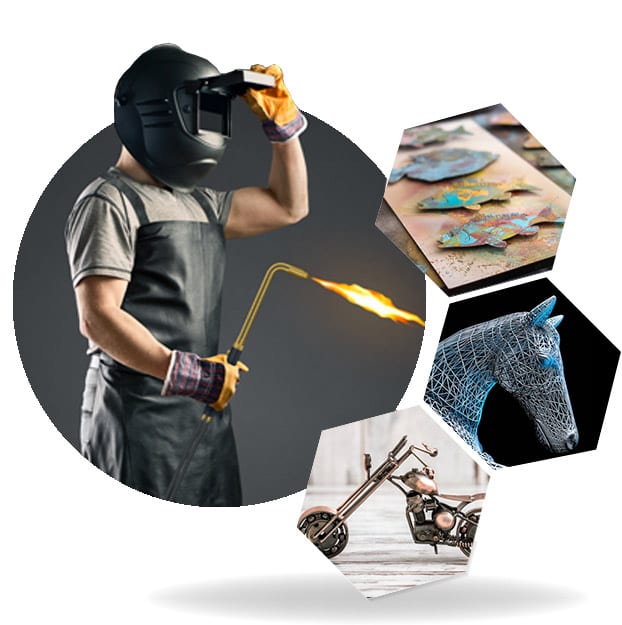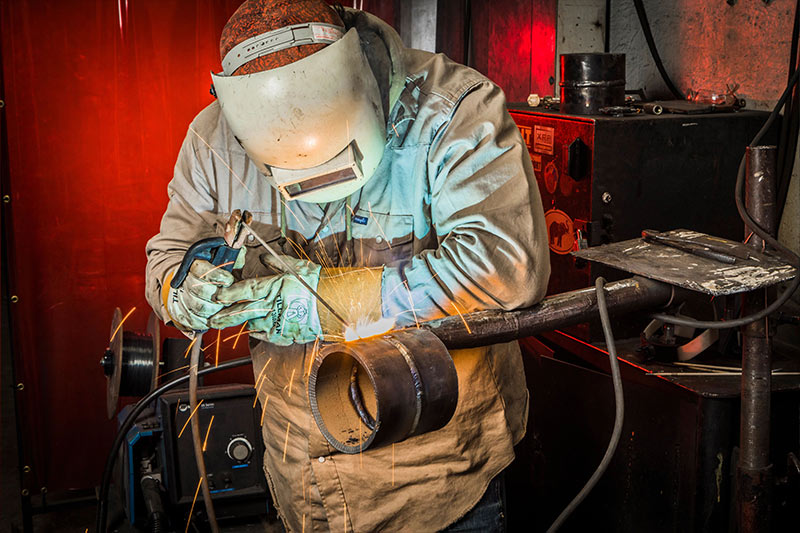All About Welding: Trick Insights Into Techniques and Ideal Practices for Success
Welding encompasses a variety of techniques, each fit for particular materials and applications. Understanding these techniques, such as GMAW, SMAW, and TIG, is necessary for accomplishing excellent outcomes. The best equipment and safety and security techniques can not be forgotten. As prep work and repairing play vital roles in the welding process, mastering these components can substantially boost the high quality of the end product. What are the vital factors that ensure a successful weld?
Understanding Various Welding Strategies
Welding methods encompass a selection of techniques, each fit to details applications and materials. Among one of the most typical methods are Gas Steel Arc Welding (GMAW), Secured Metal Arc Welding (SMAW), and Tungsten Inert Gas Welding (TIG) GMAW, additionally called MIG welding, is popular for its rate and flexibility, making it ideal for slim materials. SMAW, or stick welding, is favored for its simplicity and effectiveness in outside atmospheres, especially with thicker metals. TIG welding supplies precision and control, making it ideal for elaborate work and non-ferrous steels (Montana Mobile Welding and Repair Belgrade Fabrication). Each strategy has its unique benefits and considerations, enabling welders to pick the most effective technique based upon the job's demands, material type, and wanted outcomes. Understanding these techniques is essential for successful welding
Important Welding Tools and Tools
While different welding techniques require specific skills, the right devices and tools are equally crucial for accomplishing high quality results. Important welding equipment includes welding makers, which differ depending upon the method-- such as MIG, TIG, or stick welding. Protective gear, including handwear covers, aprons, and headgears, assurances security and comfort throughout the process. Furthermore, clamps and components aid safeguard materials in location, making certain accuracy in welds. Consumables like welding rods, cord, and protecting gas are likewise important elements that influence the quality of the weld. Furthermore, devices such as cutters and mills promote surface area prep work and post-weld completing, contributing to a professional end result. Buying top notch devices eventually enhances the performance and performance of welding jobs.
Security Practices in Welding
Proper safety techniques are crucial in the welding market to shield employees from prospective dangers. Welders must wear suitable individual protective devices (PPE), including helmets with appropriate shading, handwear covers, and flame-resistant clothes. Adequate ventilation is essential to decrease exposure to hazardous fumes and gases generated during the welding procedure. In addition, employees ought to be trained in the proper handling of welding devices to stop crashes. Fire safety and security steps, such as keeping flammable products far from the welding location and having fire extinguishers readily offered, are essential. Regular examinations of equipment and work spaces can help identify possible hazards before they bring about crashes. By adhering to these safety practices, welders can develop a more secure working environment and minimize threats connected with their trade.
Preparing Products for Welding
Preparing products for welding is a vital action that considerably affects the quality and stability of the end product (Belgrade Fabrication). Appropriate prep work entails cleaning the surfaces to get rid of pollutants such as dirt, rust, and oil, which can compromise the weld. Techniques such as grinding, sanding, or using solvents are commonly utilized to achieve a clean surface. Additionally, making sure that the materials mesh snugly is necessary; spaces can result in weak welds. It's likewise important to take into account the positioning and positioning of the parts, as this will influence the simplicity of welding and the final outcome. Selecting the suitable filler product and ensuring compatibility with the base steels is necessary for achieving strong, resilient welds.
Tips for Achieving High-Quality Welds
Accomplishing top notch welds needs attention to information and adherence to best methods throughout the welding process. Appropriate joint preparation is essential, guaranteeing surfaces are complimentary and tidy from impurities. Choosing the suitable filler product and welding technique based upon the base steels is vital for optimal bonding. Maintaining regular travel rate and angle while welding can prevent flaws and advertise harmony. Furthermore, managing warm input is vital; extreme warm can lead to bending and weakened joints. Routinely examining the welds throughout the process enables immediate modifications if required. Employing proper post-weld treatments, such as cleaning and stress relief, can improve the toughness and stability of the weld, inevitably ensuring a successful outcome.
Troubleshooting Common Welding Issues
Welding frequently offers obstacles that can influence the high quality and stability of the end product. Typical problems such as porosity, inconsistent weld beads, and getting too hot can arise, each needing certain fixing techniques. Comprehending these issues is necessary for welders to boost their skills and attain ideal outcomes.
Porosity Problems Discussed
Although porosity can usually be forgotten, it continues to be a critical concern find more in welding that can compromise the honesty of a finished item. Porosity describes the presence of small gas pockets within the weld grain, which can lead and weaken the joint to early failing. This trouble normally arises from contaminants, moisture, or incorrect protecting gas insurance coverage during the welding procedure. To mitigate porosity, welders need to verify that the base materials are dry and tidy, make use of appropriate shielding gases, and preserve constant welding parameters. On a regular basis checking the tools and setting can also assist determine possible problems prior to they manifest in the weld. Attending to porosity properly is essential for attaining solid, sturdy welds that meet top quality requirements.

Inconsistent Weld Beans
Irregular weld grains can significantly influence the high quality and toughness of a completed item. Numerous variables add to this concern, including inappropriate traveling speed, incorrect amperage settings, and inconsistent electrode angles. When the welder moves as well quickly, a bead might show up narrow and lack penetration, while relocating too slowly can create too much build-up. Furthermore, using the wrong amperage can lead to either damaging or excessive spatter, both of which compromise weld integrity. The welder's method, such as inconsistent torch motion, can also bring read more about irregular bead appearance. To mitigate these troubles, welders need to focus on keeping constant, controlled movements and making certain appropriate tools settings to achieve uniformity in their welds. Uniformity is vital to attaining strong and trusted welds.
Getting Too Hot and Warping Issues
Too much warm throughout the welding process can bring about significant getting too hot and buckling problems, affecting the architectural stability of the work surface. These problems commonly manifest as distortion, which can jeopardize placement and fit-up, making more assembly testing. Aspects adding to overheating include the option of welding criteria, such as voltage and take a trip rate, along with the kind of product being bonded. To minimize these issues, welders must maintain consistent traveling rate and suitable heat input while checking the work surface temperature. In addition, pre-heating or post-weld warm treatment can assist reduce anxieties caused by fast cooling - Montana Mobile Welding and Repair Welding. Routine inspection and adherence to ideal practices are important in avoiding getting too hot and guaranteeing the long life and dependability of bonded frameworks
Often Asked Inquiries
What Are the Career Opportunities in the Welding Sector?
The welding sector supplies diverse occupation chances, consisting of settings as welders, designers, inspectors, and instructors. Specialists can work in production, building, aerospace, and automotive fields, taking advantage of solid need and competitive salaries in numerous roles.
Exactly How Can I Enhance My Welding Speed Without Giving Up High Quality?
To improve welding rate without sacrificing quality, one need to practice efficient strategies, keep equipment, maximize setups, and boost hand-eye sychronisation. Normal training and looking for responses can also greatly add to attaining much faster, top quality welds.
What Qualifications Are Available for Welders?
Various qualifications exist for welders, including those from the American Welding Society (AWS), the National Facility for Building And Construction Education and Research Study (NCCER), and different industry-specific organizations. These credentials improve employability and demonstrate ability effectiveness.
How Does Welding Impact the Features of Metals?
Welding influences the homes of metals by altering try here their microstructure, which can bring about changes in toughness, ductility, and hardness. Heat input and air conditioning prices during the process substantially influence these product characteristics.
Can I Weld Dissimilar Metals Together?
